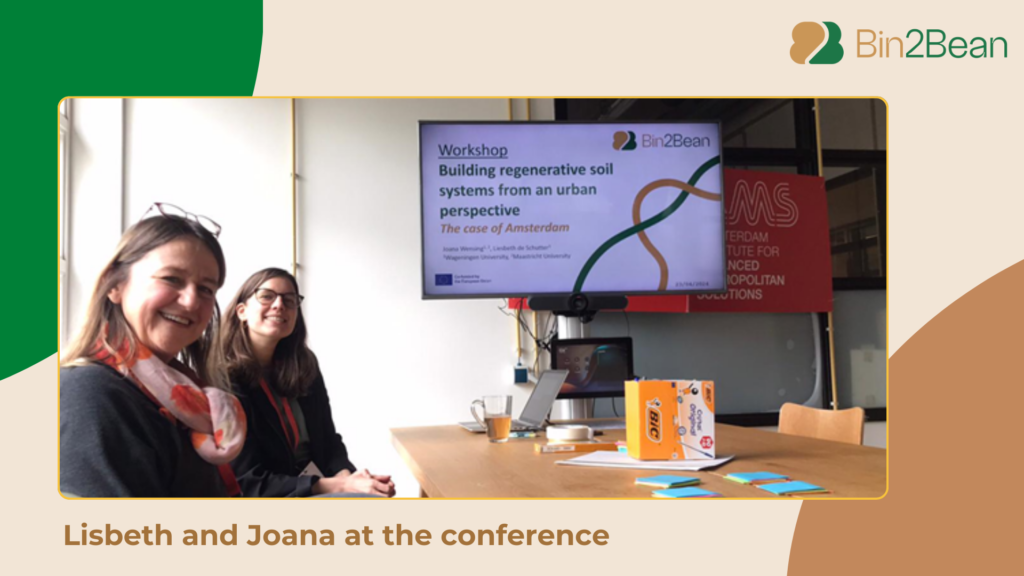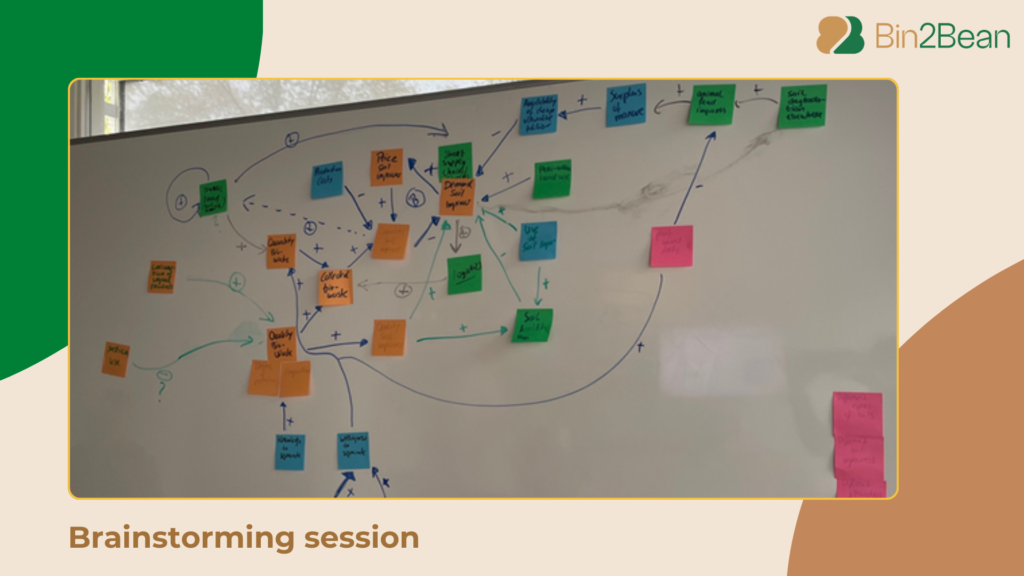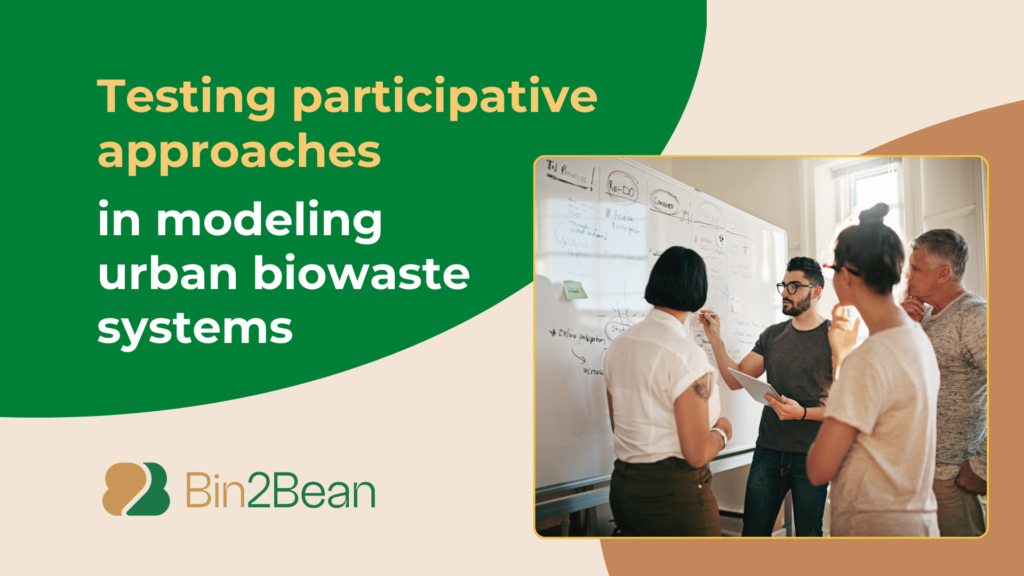The Bin2Bean project team, represented by Joana Wensing and Liesbeth de Schutter of Wageningen University, organized a workshop at the AMS conference “Reinventing the City: Blueprints for messy cities”. The conference, which took place in Amsterdam on April 23-25, provided a valuable opportunity to test a participatory modeling approach with interested experts, urban citizens and practitioners in the field of urban biowaste recycling.

Why should we model urban biowaste systems?
Despite the new EU legislation that obliges municipalities to collect urban biowaste separately, especially urban municipalities still struggle with behavioral, environmental and socio-economic barriers to implement valorisation pathways for residential, out of home and industrial biowaste. Overcoming such barriers is of particular importance to recycle bio-waste as valuable nutrients for organic soil improvers.
To better understand how these barriers contribute to the overall problem of low biowaste recycling rates in urban contexts, Bin2Bean proposes a systems thinking approach. Systems thinking requires stakeholders to come together and work on a joint understanding of the issue at hand. Specifically, they jointly define the system around urban biowaste in terms of its purpose, critical influencing elements, and the relations between these elements. This approach helps to identify potential interventions to tackle low biowaste collection rates, poor quality of separated biowaste or low willingness to pay for soil improvers by end-users and high societal costs.
How did we conduct the participatory modelling workshop?
As a preparation for participative workshops with urban biowaste communities in the Bin2Bean Living Labs of Amsterdam, Hamburg and Egaleo, a participative modeling workshop has been conducted with a number of participants at the AMS conference. After a short presentation of the Bin2Bean project and its focus on soil health, we introduced the participants to the basics of systems thinking. It is important that participants learn that, in such a complex problem context, system behavior is determined by interactions among all system elements and so-called feedback loops, which may cause the system to be locked into, or to move towards, unsustainable system states.
- The first step (10 mn.) in the participative modeling workshop involved the identification of key factors, i.e. the system elements that the participants considered of critical importance for the behavior of the biowaste system in the Amsterdam metropolitan area. Practically, participants use their own experiences of an urban biowaste system in relation to soil health and wrote down factors on post-its.
- In the second step (20 mn.), we jointly created a participative causal map of the Amsterdam biowaste system. Starting with sticking a post-it with a critical factor from a participant on a white board, other participants were invited to add their post-its one by one and to discuss the relation among factors with the other participants. When the group agreed on the type and direction of the interaction among the factors, a causal map of the biowaste system emerges interactively.
- The third step (15 mn.) of the workshop was oriented at the identification of feedback loops in the created causal map that can affect soil health in the Amsterdam context. Feedback loops may involve direct feedbacks such as impurities that affect the quality of the soil improver and result in a lack of demand for urban soil improvers, or indirect feedback loops such as animal feed imports that support an oversupply of animal manure in The Netherlands, thereby preventing a market for organic soil improvers and contributing to a linear food system lock-in.
- The final step (15 mn.) was meant to identify weak or strong feedback loops as potential intervention points for a transition towards a sustainable biowaste system oriented at soil health. With a biowaste community that includes the different stakeholder groups, proposals can be developed to help strengthening weak system parts and/or remove system lock-ins that prevent biowaste recycling into valuable soil improvers.

What are the key take-aways of the workshop?
As this workshop was meant as a learning experience to improve the participative modeling approach in Bin2Bean biowaste communities in the fall of 2024, workshop participants were asked to fill in a short questionnaire about their experiences and recommendations. Participants indicated that their understanding of the complex interdependencies between biowaste and soil health improved moderately to very much and that the workshop was effective in supporting a community building approach for the topic of biowaste and soil health.
They also agreed that the participative modeling workshop can be a great help in supporting key actors (households, waste processors, farmers and other land managers) to improve soil health with soil improvers from urban biowaste. For us as facilitators, a key learning experience was that the system should be defined by the stakeholders in terms of shared system purpose and key elements, preferably with producers and collectors of biowaste, as well as distributers and end-users of soil improvers present in the workshop.
This will support interactive learning among biowaste stakeholders oriented at biowaste recycling and soil health in city-regions.

